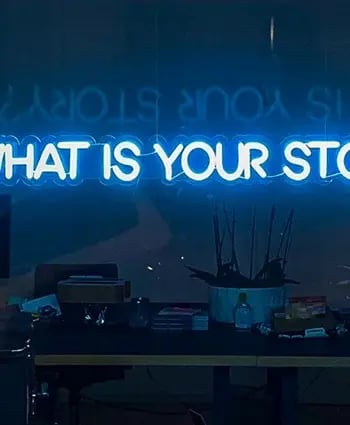How to Write a Corporate Video Script in 7 Steps [Free Template]
Where do you start when writing a corporate video script? We guide you through the 7 steps to success, with a free script template to make things easy
If you want to know how to write a captivating corporate video script that inspires action and drives results then you need to download our free video script template!
So... how do you write a video script that speaks to your audience and meets your goals? To get you going we've populated the template with a real script we developed for one of our clients and it includes a step by step process to get your imagination fired up and focused.
If you're considering employing the services of an excellent video agency (like us!) that will help you develop your script to perfection, we'd love to talk - tell us about your project and get a quote.
Venture has produced 1000's of video scripts that have driven excellent results for our clients and with our script template download you'll be able to craft your very own in no time at all.
After you've downloaded our corporate video script template, keep on reading below to discover the 7 simple steps to writing an effective video script for your brand or company...
If you're creating a corporate film then you're going to need a video script. Whether it's a promotional brand film, a corporate training video for internal use or a video for social media or your website, a well written script you can inspire your audience into taking action.
7 Simple Steps to Writing an Effective Corporate Video Script
Step 1. Write a Video Brief First
In order to write a script that drives the results you want you'll definitely need to write a video brief. Not only does this help you understand your objectives, it also helps you understand your audience and the value you want to demonstrate to them.
These insights help you craft the perfect script.
- What is the purpose of your video?
- What action would you like your viewers to take?
- Who is your audience and what are their habits online?
- What value is your video bringing to your audience?
- What distribution channels are you going to use?
You'll be able to understand and empathise with your audience and have a deeper understanding of how to communicate with them by knowing what motivates them. You'll be able to create a marketing story arc to engage them with succinct, relevant and compelling content which results in the desired action you want them to take.
Free resource: If you haven't already created a video brief for your project you can download our Video Production Brief Template to help you write your video brief.
2. Turn Your Message into a Story
For any piece of video content you create, you'll have one or several core messages you want to communicate (your brief will help you identify these).
The trick is translating these core messages into a simple story for your script to follow. Everything you decide will depend on the objective your video needs to achieve, and what your audience finds valuable and engaging. It's not just about what you want to say to your audience: it's also about saying it in a way that resonates with them.
Your story doesn't need to be epic or complicated. All it actually needs to be is a logical progression from one point to another, where the start is things as they currently are and the end is things as you want them to be. A good story should grab hold of your audience and tell your message in such an engaging way that it guides them to a Call-to-Action for the desired action.
For help turning your messages into elegant and workable story ideas, plus some video examples, check out our 4 steps to transforming complex ideas into simple video marketing.
3. Speak in a Language Your Audience Understands
When writing your script, always talk in your audience's language rather than your own.
Try to get outside of your own head. Remember: your video script needs to appeal to your target audience, not you, your boss or your stakeholders. [Tweet this]
Generally, you should keep the tone simple and conversational. The only excuse for breaking this rule is if you're a bank or a hospital (and even then a relaxed tone can work wonders). It doesn't matter if you're B2C or B2B, internal or external, your audience wants to hear you speaking like a human, not a robot. That means cutting jargon, buzzwords and meaningless waffle. It means speaking on a level that your audience will understand, with concepts and vocabulary they're already familiar with.
Your script should be in line with your brand voice, but never to the detriment of viewers. If you can include real words and phrases that your audience themselves use, you're well on your way to a great video script.
4. Keep it Short and Sweet
When it comes to script writing, less is always more. Say what you need to say and keep it as short and succinct as possible. We generally try to keep videos to between 2-3 minutes.
(This isn't to say every video you make will be super-short. A good training video can easily be 30 minutes long. But none of that time should be wasted, and every part of the script should be concise, precise and necessary to the video as a whole.)
In a great script every word earns its place. The shorter your video, the more punch each sentence, phrase and word must have.
Here are our top tips for keeping your script as lean and impactful as possible:
- Say something unique, not what everyone else says
- Use simple, everyday language over unnecessarily complicated words
- Cut the flab, fluff and superfluous information
- Never repeat yourself unless it's for dramatic effect
- Be prepared to make sacrifices (what's really most important to communicate?)
5. Don't Just Use Words
You're making a video, not writing a novel. You've got more than just words to play with in your script. The story in video content is told through editing, motion graphics, music, sound effects and voice over, so don't feel like you need to communicate everything through dialogue.
Sound and visuals should work seamlessly together to bring your story and messaging to life, and that means including all the relevant elements in your script. Note down the action that will be happening on screen, what sounds should be heard, and any accompanying voice over.
This can be a hard process if you're not used to it. An experienced video agency (hello!) will help to write your script, and offer support and advice throughout this entire scripting process.
We use a two-column template to write our scripts, which splits the video into visual & audio parts and makes it easy to imagine how the final product will come together. Download our Video Script Template to have a play with it yourself.
6. Do Several Script Readings
Once you've got a workable draft of your video script, you should start reading it out. Until you've done readings, you won't be able to tell how your script sounds when spoken aloud.
You want your video script to flow smoothly from line to line, rather than sounding stilted. If you can read the script naturally, without sounding forced, that's a good sign.
Pay attention to:
- How long it takes to read your script,
- Where inflection and emphasis falls, and
- Any awkward phrases that get stuck in the mouth.
Your readings should bring up parts of the script that need to be changed before it's ready to go. Keep editing until you can read all the way through without .
7. Tweak, Re-tweak, and Check Against Your Brief
You'll undoubtedly have several rounds of revisions to go through with any video script. That's just the nature of making corporate videos where lots of stakeholders like to get involved.
Before you sign everything off, double check your script against the video brief you wrote in step 1. Ask yourself these questions:
- Is this script likely to achieve its objectives?
- Is it written in a way that will resonate with my audience?
- Does it communicate the core message(s)?
- Does it tell an engaging story with a logical flow?
- Does it use an effective mix of sound and visuals?
- Does it include a compelling Call-to-Action?
- Is it no longer or more complex than it needs to be?
- Is it the optimum length for the intended distribution channels?
If the answer to any of these is no, go back and edit your video script until it passes on all counts. Keep pushing yourself within the time frame you have. You might be surprised how short and appealing you can make your video while still keeping your message and story intact.
Round-Up: Tell the Right Story
These 7 steps guide you through the process of writing a video script, from initial brief to the final glorious result (which is a detailed blueprint to take you step-by-step through video production).
Your script rests on your ability to write an honest video brief, create a compelling story and communicate it well. These are all things that you should work on with a video agency if you're struggling to know where to start or wanting some expert guidance.
And don't forget to download our Video Script Template to kick-start the writing process for your next video project today.
ABOUT VENTURE
Venture is an award-winning corporate video production company that helps businesses, brands, and organisations understand their audiences, win their attention, inspire them to take action, and deliver results.
Written by Jonathan English CEO for Venture Videos — a full-service video production agency that specialises in producing creative videos & campaigns that get real results.










